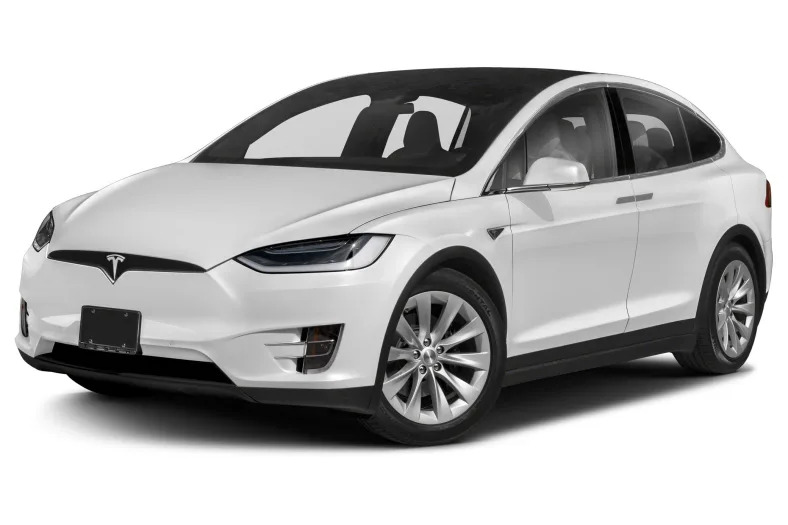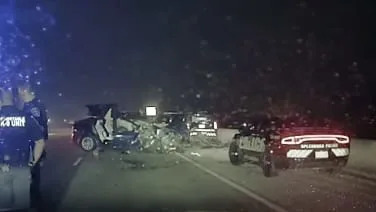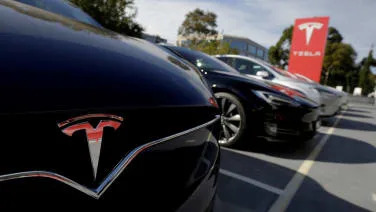75D 4dr Sport Utility
2017 Tesla Model X
The Tesla Model X, arguably the greenest family car on the road, is a five-, six-, or seven-passenger all-wheel-drive all-electric crossover. It got off to a rocky start at its launch, when it didn't have rear seats that folded flat, but the 2017 Tesla Model X does. The Model X crossover, like the Model S luxury car, comes with a choice of batteries, 75, 90, or 100 kilowatt hours, as well as a more potent model, the P100D; the P stands for performance, as it has a much bigger rear motor. The 75-kwh model can go up to 237 miles on one charge, while the 100D can go 289 miles.
The standard Tesla X isn't a rocket like the Tesla S, because it weighs nearly 6000 pounds, but it will shoot silently from zero to sixty in six seconds with the smallest battery, or 4.8 seconds with the 90-kwh battery, or the P100D will do it in an astonishing 2.9 seconds, same as the quickest Tesla S. It draws an astounding 762 horsepower from its motors.
Despite that weight, the Tesla X handles well for a crossover, thanks to its low center of gravity from the battery-pack location under the floor. And maybe because of the weight, the ride is sedate.
The rear doors raise and lower vertically, using the key fob. They're hinged at top, and pivot and fold, so they don't swing outward in tight parking situations; but it's the driver's door that far more often deals with squeezes. And they're too slow, and like anything electronic the time will come when they stop working, like when the sensors imagine some danger to opening the door. These so-called falcon doors prevent a roof rack or even skis from going on top.
Safety equipment includes 12 airbags, LED headlamps (although the LED headlamps on the Tesla S were rated Poor by the IIHS), blind-spot and lane-departure warnings. Automatic emergency braking, or AEB, has been redesigned for the latest models, and uses radar to stop the car at speeds of up to 28 mph. Every Tesla X is equipped with the hardware for the infamous Autopilot self-driving system, the cameras and radar, but the software costs $5000.
The X recharges with household current, or with an adapter can be charged at the slim but growing Tesla network of DC quick-charge sites, where the battery can be charged to 80 percent in about half an hour.
Full Review
Full Review
The Model X crossover, like the Model S luxury car, comes with a choice of batteries, 75, 90, or 100 kilowatt hours, as well as a more potent model, the P100D; the P stands for performance, as it has a much bigger rear motor. The 75-kwh model can go up to 237 miles on one charge, while the 100D can go 289 miles.
The standard Tesla X isn't a rocket like the Tesla S, because it weighs nearly 6000 pounds, but it will shoot silently from zero to sixty in six seconds with the smallest battery, or 4.8 seconds with the 90-kwh battery, or the P100D will do it in an astonishing 2.9 seconds, same as the quickest Tesla S. It draws an astounding 762 horsepower from its motors.
Despite that weight, the Tesla X handles well for a crossover, thanks to its low center of gravity from the battery-pack location under the floor. And maybe because of the weight, the ride is sedate.
The rear doors raise and lower vertically, using the key fob. They're hinged at top, and pivot and fold, so they don't swing outward in tight parking situations; but it's the driver's door that far more often deals with squeezes. And they're too slow, and like anything electronic the time will come when they stop working, like when the sensors imagine some danger to opening the door. These so-called falcon doors prevent a roof rack or even skis from going on top.
Safety equipment includes 12 airbags, LED headlamps (although the LED headlamps on the Tesla S were rated Poor by the IIHS), blind-spot and lane-departure warnings. Automatic emergency braking, or AEB, has been redesigned for the latest models, and uses radar to stop the car at speeds of up to 28 mph. Every Tesla X is equipped with the hardware for the infamous Autopilot self-driving system, the cameras and radar, but the software costs $5000.
The X recharges with household current, or with an adapter can be charged at the slim but growing Tesla network of DC quick-charge sites, where the battery can be charged to 80 percent in about half an hour.
Hide Full Review
Retail Price
| Engine | |
| MPG | 91 City / 95 Hwy |
| Seating | 5 Passengers |
| Transmission | 1-spd auto |
| Power | 518 @ rpm |
| Drivetrain | all wheel |





